Kingdom Plantae Family Cactaceae Scientific name Lophophora williamsii Higher classification Lophophora | Order Caryophyllales Genus Lophophora Rank Species | |
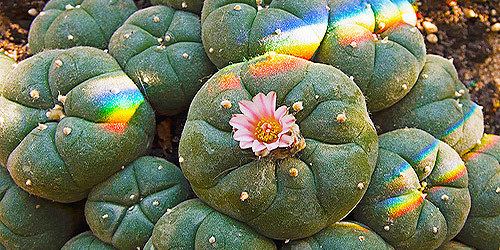 | ||
Conservation status Vulnerable (Population decreasing) Similar Cactus, Lophophora, San Pedro Cactus, Sage of the diviners, Mammillaria | ||
How to grow care for lophophora williamsii the peyote cactus
Lophophora williamsii /loʊˈfɒfərə wɪlˈjæmsiaɪ/ or peyote (/pəˈjoʊti/) is a small, spineless cactus with psychoactive alkaloids, particularly mescaline. The English common name peyote comes from the like-spelled Spanish name, which in turn comes from the Nahuatl name peyōtl [ˈpejoːt͡ɬ], said to be derived from a root meaning "glisten" or "glistening". Other sources translate the Nahuatl word as "Divine Messenger". Native North Americans are likely to have used peyote, often for spiritual purposes, for at least 5,500 years.
Contents
- How to grow care for lophophora williamsii the peyote cactus
- How to harvest cactus seed lophophora the peyote cactus
- Description
- Distribution and habitat
- Psychoactive and medicinal
- History
- Adverse reactions
- Huichol culture
- United Nations
- Canada
- United States
- References
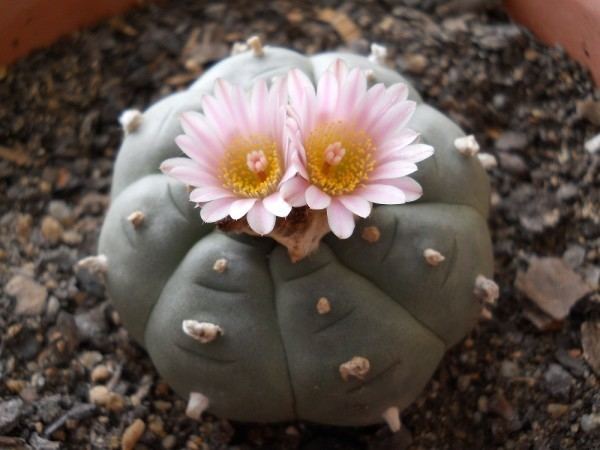
Peyote is native to Mexico and southwestern Texas. It is found primarily in the Chihuahuan Desert and in the states of Coahuila, Nuevo León, Tamaulipas and San Luis Potosí among scrub, especially where there is limestone.
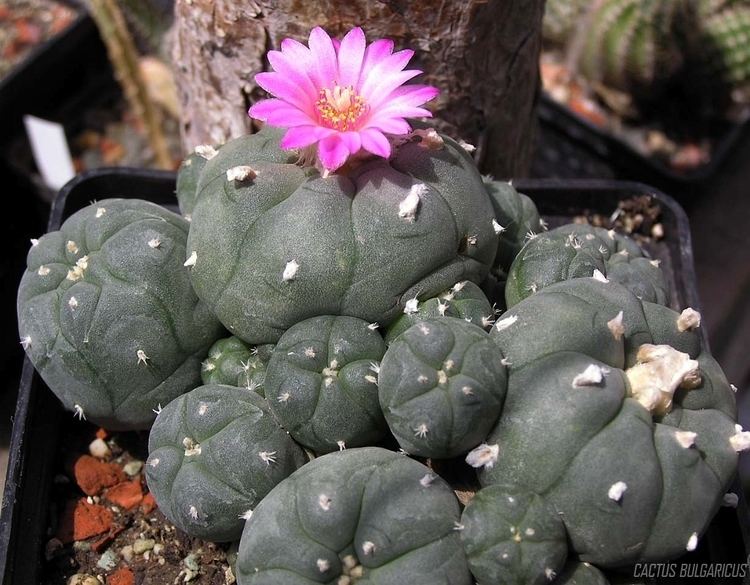
Known for its psychoactive properties when ingested, peyote is used worldwide as an entheogen and supplement to various transcendence practices, including meditation, psychonautics, and psychedelic psychotherapy. Peyote has a long history of ritualistic and medicinal use by indigenous Americans. It flowers from March through May, and sometimes as late as September. The flowers are pink, with thigmotactic anthers (like Opuntia).
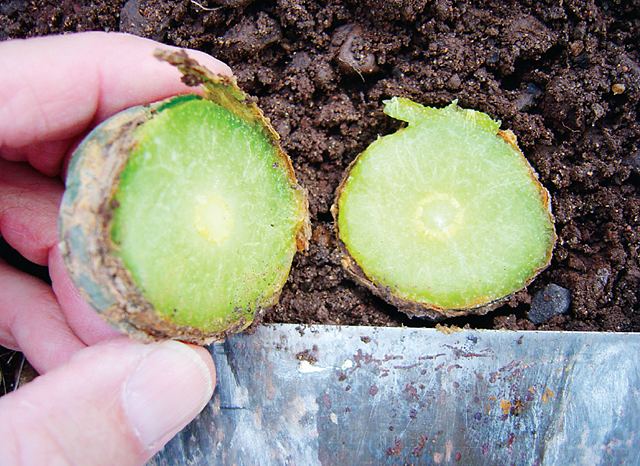
How to harvest cactus seed lophophora the peyote cactus
Description
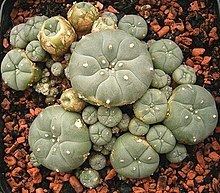
The various species of the genus Lophophora grow low to the ground and they often form groups with numerous, crowded shoots. The blue-green, yellow-green or sometimes reddish green shoots are mostly flattened spheres with sunken shoot tips. They can reach heights of from 2 to 7 centimeters (0.79 to 2.76 in) and diameters of 4 to 12 centimeters (1.6 to 4.7 in). There are often significant, vertical ribs consisting of low and rounded or hump-like bumps. From the cusp areoles arises a tuft of soft, yellowish or whitish woolly hairs. Spines are absent. Flowers are pink or white to slightly yellowish, sometimes reddish. They open during the day, are from 1 to 2.4 centimeters long, and reach a diameter from 1 to 2.2 centimeters.
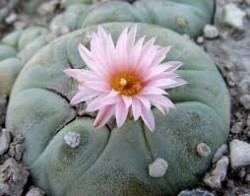
The cactus produces flowers sporadically; these are followed by small edible pink fruit. The club-shaped to elongated, fleshy fruits are bare and more or less rosy colored. At maturity, they are brownish-white and dry. The fruits do not burst open on their own and they are between 1.5 and 2 centimeters long. They contain black, pear-shaped seeds that are 1 to 1.5 mm long and 1 mm wide. The seeds require hot and humid conditions to germinate. Peyote contains a large spectrum of phenethylamine alkaloids. The principal one is mescaline. The mescaline content of Lophophora williamsii is about 0.4% fresh (undried) and 3-6% dried. Peyote is extremely slow growing. Cultivated specimens grow considerably faster, sometimes taking less than three years to go from seedling to mature flowering adult. More rapid growth can be achieved by grafting peyote onto mature San Pedro root stock.
The top of the cactus that grows above ground, also referred to as the crown, consists of disc-shaped buttons that are cut above the roots and sometimes dried. When done properly, the top of the root will form a callus and the root will not rot. When poor harvesting techniques are used, however, the entire plant dies. Currently in South Texas, peyote grows naturally but has been over-harvested, to the point that the state has listed it as an endangered species. The buttons are generally chewed, or boiled in water to produce a psychoactive tea. Peyote is extremely bitter and most people are nauseated before they feel the onset of the psychoactive effects.
Distribution and habitat
L. williamsii is native to southern North America, mainly distributed in Mexico. In the United States it grows in Southern Texas. In Mexico it grows in the states of Chihuahua, Coahuila, Nuevo León, and Tamaulipas in the north to San Luis Potosi and Zacatecas. It is primarily found at elevations of 100–1,500 m (330–4,920 ft) and exceptionally up to 1,900 m (6,200 ft) in the Chihuahuan desert, but is also present in the more mild climate of the state of Tamaulipas. Its habitat is primarily in desert scrub, particularly thorn scrub in Tamaulipas. It is common on or near limestone hills.
Psychoactive and medicinal
When used for its psychoactive properties, common doses for pure mescaline range from roughly 200 to 400 mg. This translates to a dose of roughly 10 to 20 g of dried peyote buttons of average potency; however, potency varies considerably between samples, making it difficult to measure doses accurately without first extracting the mescaline. The effects last about 10 to 12 hours. Peyote is reported to trigger states of "deep introspection and insight" that have been described as being of a metaphysical or spiritual nature. At times, these can be accompanied by rich visual or auditory effects (see synesthesia).
In addition to psychoactive use, some Native American tribes use the plant for its curative properties. They employ peyote to treat such varied ailments as toothache, pain in childbirth, fever, breast pain, skin diseases, rheumatism, diabetes, colds, and blindness. The US Dispensatory lists peyote under the name Anhalonium, and states it can be used in various preparations for neurasthenia, hysteria and asthma. Peyote also contains an alkaloid which was given the name peyocactin. It is now called hordenine.
History
In 2005 researchers used radiocarbon dating and alkaloid analysis to study two specimens of peyote buttons found in archaeological digs from a site called Shumla Cave No. 5 on the Rio Grande in Texas. The results dated the specimens to between 3780 and 3660 BCE. Alkaloid extraction yielded approximately 2% of the alkaloids including mescaline in both samples. This indicates that native North Americans were likely to have used peyote since at least five and a half thousand years ago.
Specimens from a burial cave in west central Coahuila, Mexico have been similarly analysed and dated to 810 to 1070 CE.
From earliest recorded time, peyote has been used by indigenous peoples, such as the Huichol of northern Mexico and by various Native American tribes, native to or relocated to the Southern Plains states of present-day Oklahoma and Texas. Its usage was also recorded among various Southwestern Athabaskan-language tribal groups. The Tonkawa, the Mescalero and Lipan Apache were the source or first practitioners of peyote religion in the regions north of present-day Mexico. They were also the principal group to introduce peyote to newly arrived migrants, such as the Comanche and Kiowa from the Northern Plains. The religious, ceremonial, and healing uses of peyote may date back over 2,000 years.
Under the auspices of what came to be known as the Native American Church, in the 19th century, American Indians in more widespread regions to the north began to use peyote in religious practices, as part of a revival of native spirituality. Its members refer to peyote as "the sacred medicine", and use it to combat spiritual, physical, and other social ills. Concerned about the drug's psychoactive effects, between the 1880s and 1930s, U.S. authorities attempted to ban Native American religious rituals involving peyote, including the Ghost Dance. Today the Native American Church is one among several religious organizations to use peyote as part of its religious practice. Some users claim the drug connects them to God.
Traditional Navajo belief or ceremonial practice did not mention the use of peyote before its introduction by the neighboring Utes. The Navajo Nation now has the most members of the Native American Church.
Dr. John Raleigh Briggs (1851–1907) was the first to draw scientific attention of the Western scientific world to peyote. Louis Lewin described Anhalonium lewinii in 1888. Arthur Heffter conducted self experiments on its effects in 1897. Similarly, Norwegian ethnographer Carl Sofus Lumholtz studied and wrote about the use of peyote among the Indians of Mexico. Lumholtz also reported that, lacking other intoxicants, Texas Rangers captured by Union forces during the American Civil War soaked peyote buttons in water and became "intoxicated with the liquid". Arguably, this is the first documented use of peyote by non-Native Americans.
Adverse reactions
A study published in 2007 found no evidence of long-term cognitive problems related to peyote use in Native American Church ceremonies, but researchers stressed their results may not apply to those who use peyote in other contexts. A four-year large-scale study of Navajo who regularly ingested peyote found only one case where peyote was associated with a psychotic break in an otherwise healthy person; a handful of other psychotic episodes were attributed to peyote use in conjunction with pre-existing substance abuse or mental health problems. Later research found that those with pre-existing mental health issues are more likely to have adverse reactions to peyote. Peyote use does not appear to be associated with hallucinogen persisting perception disorder (a.k.a. "flashbacks") after religious use. Peyote does not seem to be associated with physical dependence, but some users may experience psychological dependence.
Peyote can have strong emetic effects, and one death has been attributed to esophageal bleeding caused by vomiting after peyote ingestion in a Native American patient with a history of alcohol abuse. Peyote is also known to cause potentially serious variations in heart rate, blood pressure and breathing.
Research into the huichol natives of central-western Mexico, who have taken peyote regularly for an estimated 1500 years or more, found no evidence of chromosome damage in either men or women.
Huichol culture
The Huichol religion consists of four principal deities: Corn, Blue Deer, Peyote, and the Eagle, all descended from their Sun God, "Tao Jreeku". Schaefer has interpreted this to mean that peyote is the soul of their religious culture and a visionary sacrament that opens a pathway to the other deities.
United Nations
Article 32 of the Convention on Psychotropic Substances allows nations to exempt certain traditional uses of peyote from prohibition:
A State on whose territory there are plants growing wild which contain psychotropic substances from among those in Schedule I and which are traditionally used by certain small, clearly determined groups in magical or religious rites, may, at the time of signature, ratification or accession, make reservations concerning these plants, in respect of the provisions of article 7, except for the provisions relating to international trade.
However, this exemption would apply only if the peyote cactus were ever explicitly added to the Schedules of the Psychotropic Convention. Currently the Convention applies only to chemicals. Peyote and other psychedelic plants are neither listed nor regulated by the Convention.
Canada
Mescaline is listed as a Schedule III controlled substance under the Canadian Controlled Drugs and Substances Act, but peyote is specifically exempt. Possession and use of peyote plants is legal.
United States
Where there is exclusive federal jurisdiction or state law is not racially limited, peyote use by Native American Church members is legal and racially neutral in the United States. This exemption from federal criminalization is as old as creation of federal law creating peyote related offenses.
This law has been codified as a statute in the American Indian Religious Freedom Act of 1978, and made part of the common law in Peyote Way Church of God v. Thornburgh, (5th Cir. 1991); it is also in administrative law at the 21 C.F.R. 1307.31. The C.F.R. part dealing with "SPECIAL EXEMPT PERSONS" states:
Section 1307.31 Native American Church. The listing of peyote as a controlled substance in Schedule I does not apply to the nondrug use of peyote in bona fide religious ceremonies of the Native American Church, and members of the Native American Church so using peyote are exempt from registration. Any person who manufactures peyote for or distributes peyote to the Native American Church, however, is required to obtain registration annually and to comply with all other requirements of law.
U.S. v. Boyll, 774 F.Supp. 1333 (D.N.M. 1991) addresses this racial issue specifically and concludes:
For the reasons set out in this Memorandum Opinion and Order, the Court holds that, pursuant to 21 C.F.R. § 1307.31 (1990), the classification of peyote as a Schedule I controlled substance, see 21 U.S.C. § 812(c), Schedule I(c)(12), does not apply to the importation, possession or use of peyote for 'bona fide' ceremonial use by members of the Native American Church, regardless of race.
Following the passage of the American Indian Religious Freedom Act Amendments of 1994, United States federal law (and many state laws) protects the harvest, possession, consumption and cultivation of peyote as part of "bona fide religious ceremonies" (the federal statute is the American Indian Religious Freedom Act, codified at 42 U.S.C. § 1996a, "Traditional Indian religious use of the peyote sacrament," exempting only use by Native American persons, while some state laws exempt any general "bona fide religious activity"). American jurisdictions enacted these specific statutory exemptions in reaction to the U.S. Supreme Court's decision in Employment Division v. Smith, 494 U.S. 872 (1990), which held that laws prohibiting the use of peyote that do not specifically exempt religious use nevertheless do not violate the Free Exercise Clause of the First Amendment. Peyote is listed by the United States DEA as a Schedule I controlled substance.
